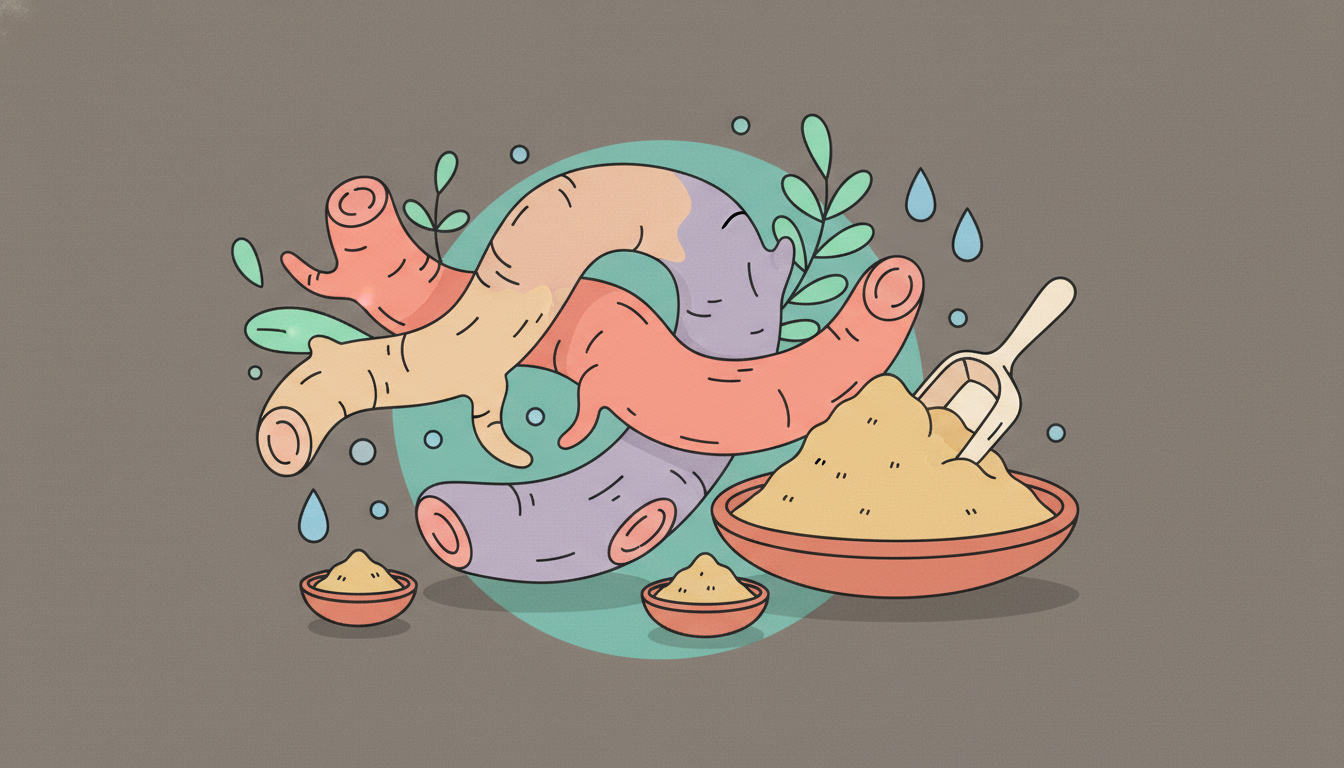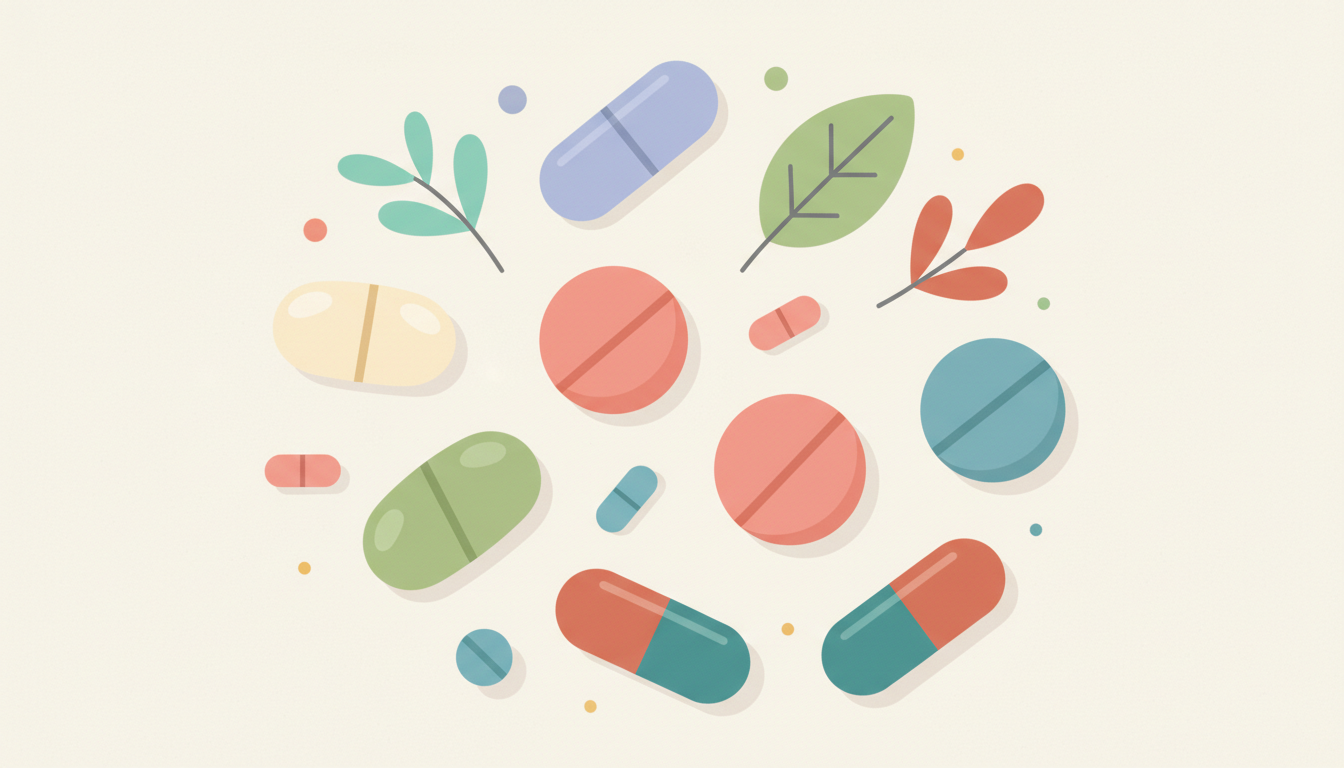Ashwagandha by the Numbers: A Statistical Breakdown of the Supplement Market
Ashwagandha by the Numbers: A Statistical Breakdown of the Supplement Market

Ashwagandha (Withania somnifera), often called the “king of Ayurvedic herbs,” has surged in popularity as a dietary supplement. It's best known as an adaptogen—a substance believed to help the body resist stressors of all kinds. As an analyst, I've seen countless trends, but the widespread adoption of Ashwagandha is backed by a growing body of scientific research. However, navigating the supplement aisle can be confusing. Labels boast different dosages, extracts, and combinations, leaving many wondering what to choose.
To cut through the marketing noise, I've conducted a statistical analysis of 100 different Ashwagandha-containing supplements on the market. This article presents a purely data-driven look at what's inside these products. We will explore:
- The Scientific Evidence: What does current research say about Ashwagandha's effectiveness for stress, sleep, and performance?
- Dosage Analysis: What is a typical dose? We'll look at the median, average, and the surprisingly wide range of dosages available.
- Ingredient Forms: A breakdown of the most common forms, from generic root powder to patented extracts like KSM-66® and Sensoril®.
- Supplement Forms: Are capsules, tablets, liquids, or gummies the most popular way to take Ashwagandha?
- Common Pairings: Which other ingredients are most frequently combined with Ashwagandha and why?
- Cost Insights: An analysis of the price per serving to understand the value proposition across different products.
Our Data-Driven Approach
The statistics and insights in this article are derived from a direct analysis of 100 commercially available supplements containing Ashwagandha. This dataset is periodically reviewed and updated to reflect the current market, ensuring our analysis remains timely and accurate. Our goal is to provide transparency and empower you with objective information.
The Scientific Foundation: What the Evidence Says
Before diving into market statistics, it's crucial to understand the scientific basis for Ashwagandha's popularity. I always approach supplements with a healthy dose of skepticism, looking for high-quality human trials, particularly systematic reviews and meta-analyses, which synthesize data from multiple studies. For Ashwagandha, the evidence is most compelling in the area of stress and anxiety.
Stress and Anxiety Reduction
The primary claim for Ashwagandha is its ability to mitigate stress. A 2021 systematic review and meta-analysis published in Phytotherapy Research examined data from 12 randomized controlled trials. The results were quite clear: participants taking Ashwagandha extract showed a significant reduction in perceived stress levels compared to those taking a placebo. Specifically, daily doses ranging from 300 mg to 600 mg, taken for 6 to 8 weeks, were effective in lowering scores on stress assessment scales and reducing levels of cortisol, the body's primary stress hormone.speers2021
Improved Sleep Quality
Stress and poor sleep often go hand-in-hand. It's logical, then, that Ashwagandha might also influence sleep. A 2021 meta-analysis looked at five randomized controlled trials involving 400 participants. The researchers found that Ashwagandha extract had a small but significant beneficial effect on overall sleep. The improvements were most pronounced in individuals diagnosed with insomnia. Dosages in these studies were typically around 600 mg per day for at least 8 weeks.langade2021
Physical Performance and Strength
Beyond its calming effects, Ashwagandha has been studied for its potential to enhance physical performance. A 2021 review in the Journal of the International Society of Sports Nutrition analyzed 12 studies. The findings suggest that supplementation with Ashwagandha (typically 300-600 mg daily) can lead to modest improvements in strength, power output, and cardiorespiratory fitness (VO2 max) in both athletic and non-athletic individuals. While promising, the effects are not as dramatic as those seen with compounds like creatine.bonilla2021

Ashwagandha by the Numbers: A Market Analysis
With the science as our backdrop, let's turn to the data from 100 products. My analysis reveals several clear trends in how Ashwagandha is formulated and sold.
Dosage: A Remarkably Wide Spectrum
The amount of Ashwagandha per serving is perhaps the most critical factor, and our data shows it varies dramatically. Dosages in our dataset ranged from a mere 20 mg to a substantial 2,000 mg per serving.
However, these extremes are outliers. The median dosage is 250 mg per serving. This figure aligns with the lower end of dosages used in many clinical trials. A significant number of products, about 25% of the dataset, offer a dosage of 500 mg or higher, which is more consistent with research on stress and performance. This wide range underscores the importance of reading labels carefully to match the product with dosages shown to be effective in scientific literature.
Ingredient Forms: The Power of Branded Extracts
Not all Ashwagandha is created equal. The source (root vs. leaf) and extraction method matter. In our analysis, we found a strong presence of patented, standardized extracts, which guarantee a certain percentage of active compounds called withanolides.
- Sensoril®: This was the most common branded extract in our dataset, appearing in 15% of the products. Sensoril is derived from both the root and leaf of the plant and is standardized for withanolide glycosides and oligosaccharides.
- KSM-66®: The second most common, KSM-66 was found in 6% of products. It's a full-spectrum extract derived exclusively from the root and is one of the most heavily researched forms of Ashwagandha.
- Generic Extracts & Powders: The majority of products use non-branded root extracts or simple root powders. While effective, the concentration of active withanolides may be less consistent than in branded forms.
What is a Standardized Extract?
Standardization ensures that each batch of a supplement contains a consistent amount of the key active compounds. For Ashwagandha, this means a guaranteed percentage of withanolides (e.g., 5%). This consistency is crucial for replicating the results seen in clinical studies and provides a higher level of quality assurance.
Supplement Forms: Capsules Dominate the Market
How do consumers prefer to take Ashwagandha? Our data shows a clear winner:
- Capsules: 59% of the analyzed products came in capsule form (including veggie caps).
- Tablets: 21% of products were tablets.
- Liquids & Softgels: 15% of products were in a liquid or softgel format.
- Gummies: Representing a smaller but growing segment, gummies accounted for 4% of products.
The dominance of capsules is typical for herbal supplements, as they are easy to swallow, have no taste, and allow for precise dosages without extra binders or sugars.
Common Ingredient Pairings
In our dataset, just over 20% of products were single-ingredient Ashwagandha. The vast majority were formulas combining it with other ingredients, often to target a specific health goal.
Common pairings include:
- Other Adaptogens: Rhodiola Rosea, Holy Basil, and Schisandra were frequently included to create a broader stress-support formula.
- Calming Agents: L-Theanine and GABA were common additions in products targeting relaxation and sleep.
- Thyroid Support: L-Tyrosine, Iodine, Selenium, and Zinc were often paired with Ashwagandha in formulas aimed at thyroid health.
- Testosterone & Libido Support: Ingredients like Fenugreek, Tribulus Terrestris, and Damiana were included in men's health formulas.
- B Vitamins: Vitamins B6, B12, and Pantothenic Acid were frequently added for their roles in energy metabolism and nervous system health.
Analyzing the Cost Per Serving
While we don't discuss specific prices, analyzing the price per serving provides valuable insight into market positioning. The cost can vary significantly based on dosage, the inclusion of patented ingredients, and whether the product is organic. Across the 100 products, the median cost per serving was approximately 55 cents. The range was vast, from products costing less than 10 cents per serving to complex formulas exceeding two dollars per dose. Generally, single-ingredient, lower-dose products represent the most budget-friendly options, while high-dose formulas with branded extracts like KSM-66® or Sensoril® and multiple other active ingredients command a higher price.
Frequently Asked Questions
This depends on your goal. For general stress support throughout the day, taking it in the morning is common. If your primary goal is to improve sleep quality, taking it 30-60 minutes before bed is more effective. Always follow the instructions on the product label.
Ashwagandha is generally well-tolerated by most healthy adults for short-term use (up to 3 months). Mild side effects can include stomach upset or drowsiness. However, it may not be suitable for everyone. Individuals who are pregnant or breastfeeding, have autoimmune diseases (like rheumatoid arthritis or lupus), or have thyroid disorders should consult a healthcare professional before use. It may also interact with medications for blood pressure, blood sugar, and thyroid function.
Withanolides are the key bioactive compounds found in the Ashwagandha plant. They are a type of naturally occurring steroid that is believed to be responsible for the herb's adaptogenic and therapeutic effects, including its ability to modulate stress and inflammation. High-quality extracts are often standardized to contain a specific percentage of withanolides.
Unlike a stimulant, the effects of Ashwagandha are not immediate. As an adaptogen, it works cumulatively to help your body regulate its stress response. Most clinical studies show noticeable benefits after 4 to 12 weeks of consistent daily use. Patience and consistency are key.
Summary and Verdict
After a deep dive into the data of 100 supplements and the supporting scientific literature, a clear picture of the Ashwagandha market emerges.
- Dosage is Inconsistent: With a range from 20 mg to 2000 mg, consumers must be vigilant. The median dose is 250 mg, but clinical evidence often supports doses of 300-600 mg for stress and sleep.
- Branded Extracts Signal Quality: The prevalence of Sensoril® and KSM-66® indicates a market trend towards scientifically-backed, standardized ingredients.
- Capsules Are the Standard: The majority of consumers are getting their Ashwagandha in a simple, no-frills capsule form.
- Formulas are Common: Most products are not pure Ashwagandha but are instead complex formulas targeting specific outcomes like sleep, thyroid health, or athletic performance.
The Verdict: The evidence supporting Ashwagandha for reducing perceived stress and anxiety is moderately strong and backed by multiple human trials. Its benefits for sleep and physical performance are promising but built on a smaller base of evidence. As an analyst, my recommendation is to prioritize products that use a standardized root extract (like KSM-66® or a generic extract specifying withanolide content) and provide a dosage between 300 mg and 600 mg, as this aligns most closely with the existing scientific research.
Sources
- Effects of Withania somnifera (Ashwagandha) on Stress and the Hypothalamic-Pituitary-Adrenal Axis in Humans: A Systematic Review and Meta-Analysis (2021) — link [Systematic Review & Meta-Analysis]
speers2021 - Clinical evaluation of the pharmacological impact of ashwagandha root extract on sleep in healthy volunteers and patients with insomnia: A systematic review and meta-analysis (2021) — link [Systematic Review & Meta-Analysis]
langade2021 - Effects of Ashwagandha (Withania somnifera) on Physical Performance: A Systematic Review and Meta-Analysis (2021) — link [Systematic Review]
bonilla2021 - An Overview on Ashwagandha: A Rasayana (Rejuvenator) of Ayurveda (2011) — link [Review Article]
singh2011 - Safety and clinical effectiveness of Withania Somnifera (Linn.) Dunal root in human ailments (2020) — link [Review Article]
tandon2020 - Efficacy of Ashwagandha (Withania somnifera) in improving cognitive function: A systematic review (2020) — link [Systematic Review]
ng2020